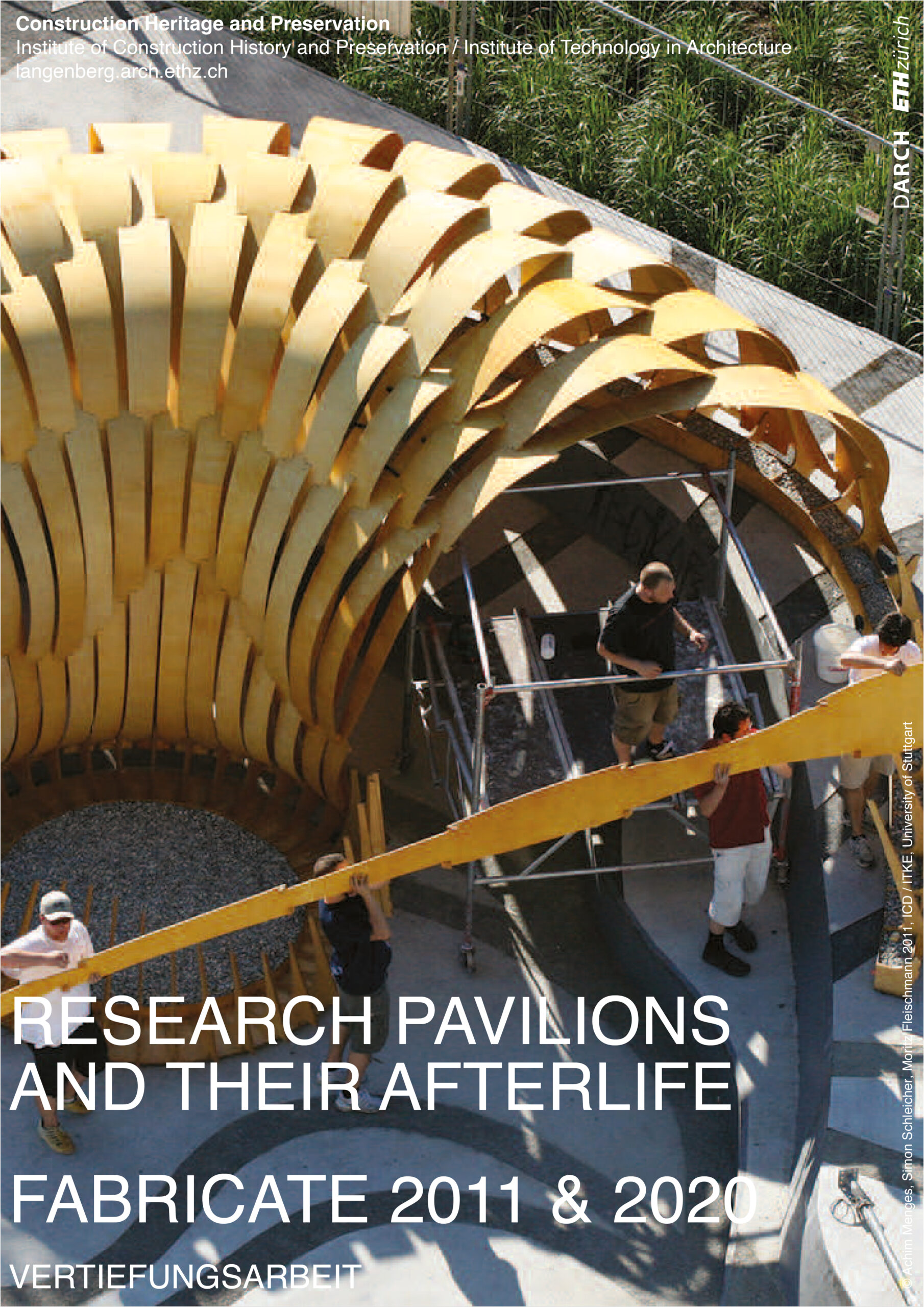
ZWISCHEN REVOLUTION UND SPIELEREI
Focus Work FS23
Students: Noé Schwaller & Timon Droll
Supervision: Dominik Reisach
The 1990s saw the beginning of the “digital turn” and with it the emergence of a “digital culture” in architecture. Alongside new design tools, architects discovered methods of digital fabrication that enabled unconventional and experimental approaches. In this context, the production of physical objects was (and still is) essential, because they serve as proof of the feasibility of the conceived processes and designs. At the same time, the prototypes, demonstrators, and pavilions produced serve as important milestones in the development of these processes and lead to their improvement. According to this logic, it can be assumed that all objects produced for research purposes represent a valuable contribution to the discourse and thus also a scientific added value, contributing to the development of technology and architecture. At the same time, the discourse in architecture is dominated by the issues of sustainability, from which research cannot be exempt. In this context, two Focus Work projects examine the results of the Fabricate Conference.
The Focus Work of Noé Schwaller and Timon Droll explores the impact of the “digital turn” on architecture and associated research endeavours and their relation to sustainability. Focusing on the 2011 and 2020 publications of the Fabricate conference, they classified 79 of the projects presented there and gathered additional information through interviews and second-hand sources. The aim was to determine the current status of each object, including whether they still exist, are still used, underwent maintenance, or were demolished, and how they could have been preserved. They also looked into how these projects were planned and built, what materials were used, and how they could be repaired.